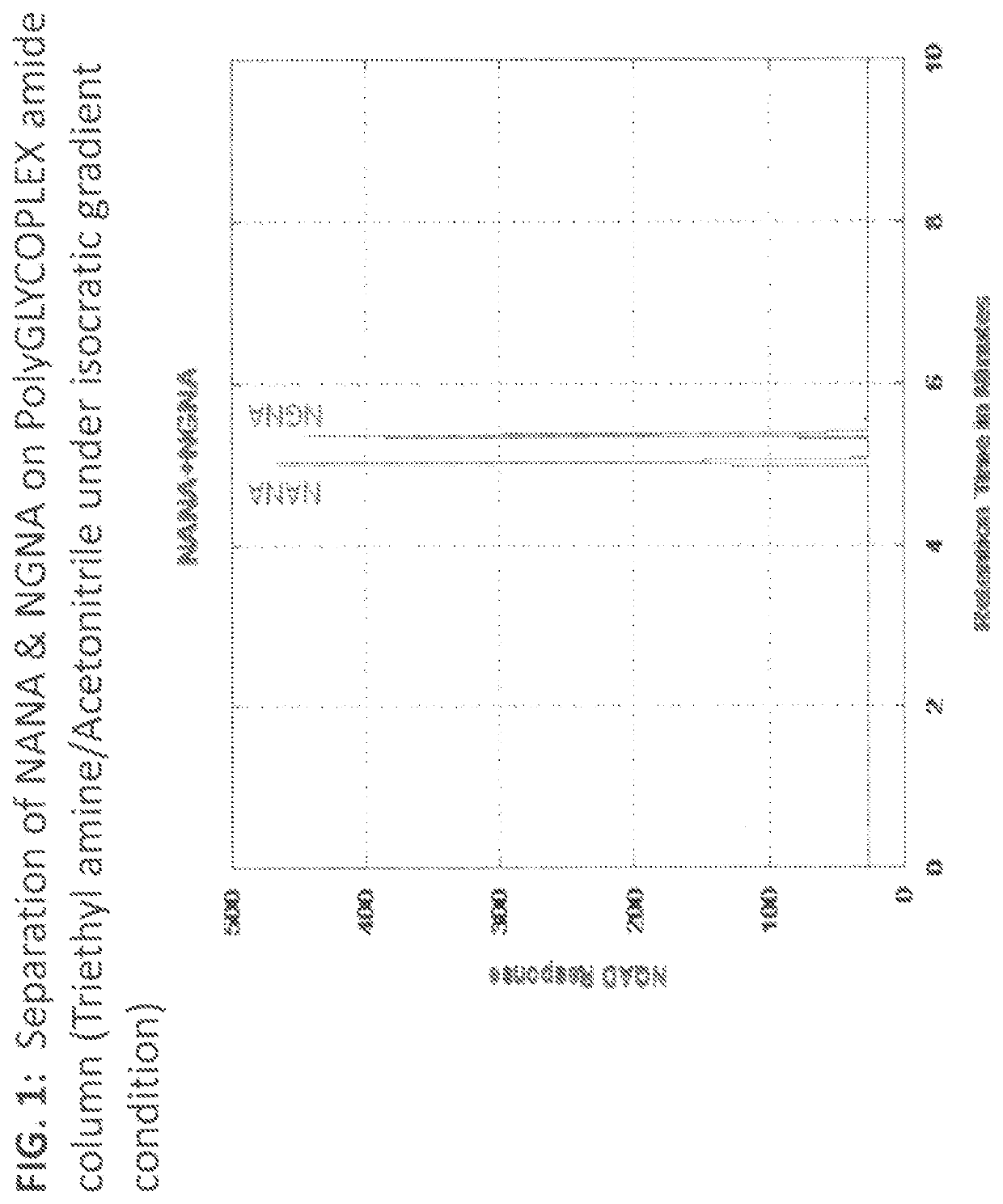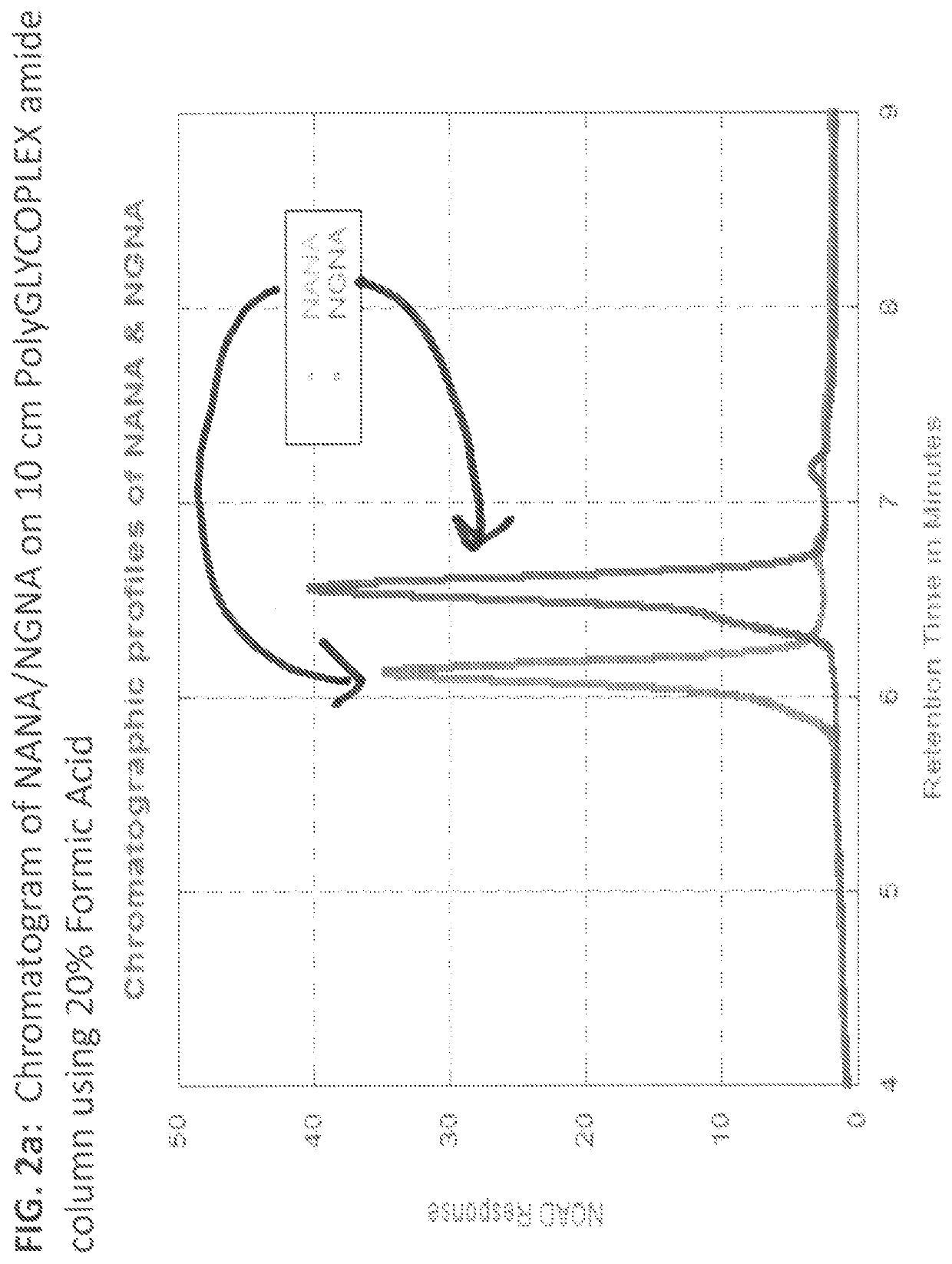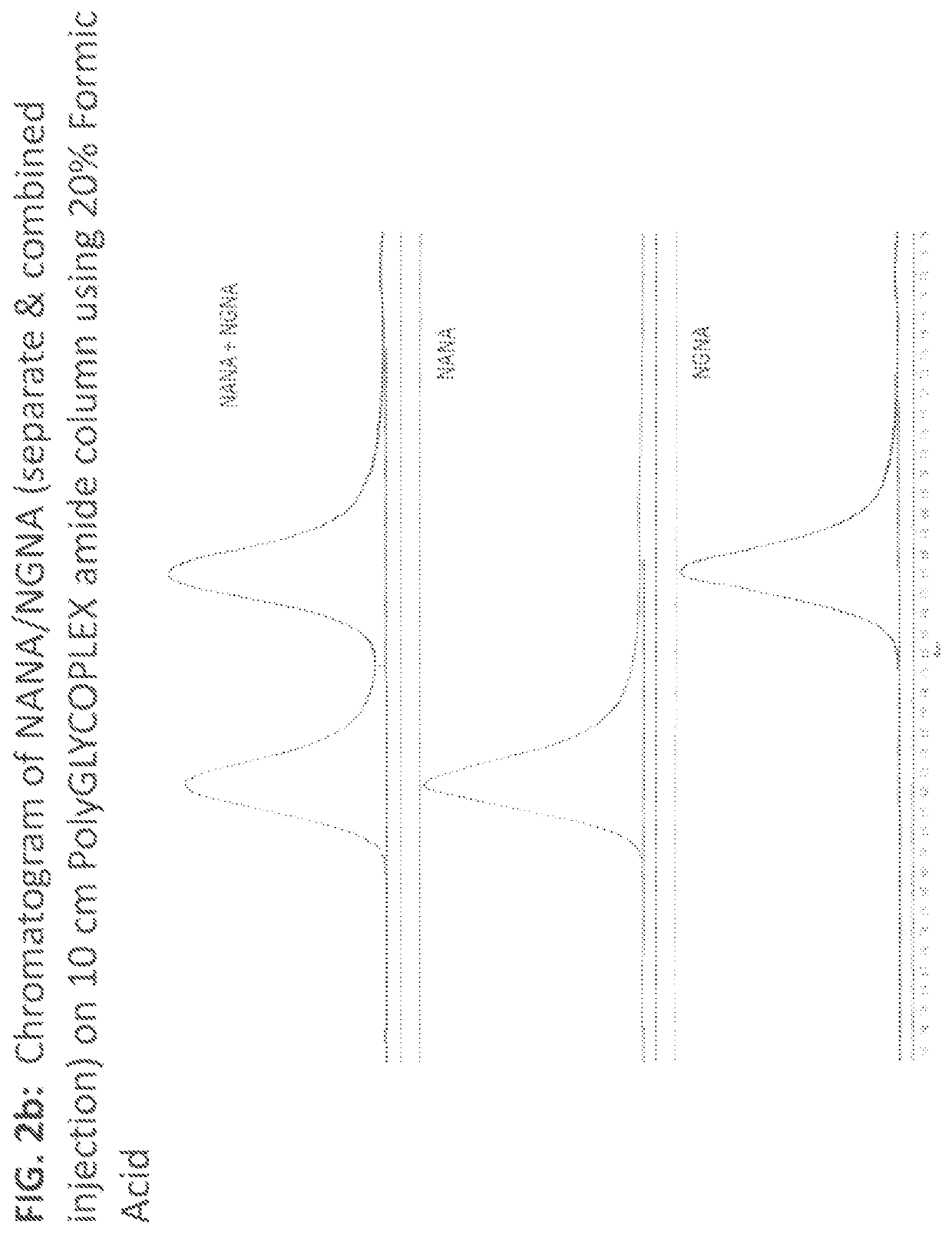Quantitation of glycan moiety in recombinant glycoproteins
a glycan and recombinant technology, applied in the field of quantitative of glycan moiety in recombinant glycoproteins, can solve the problems of high variability of hpaec-pad method, high cost of hpaec-pad materials, and high cost of maintenance, so as to achieve the highest sensitivity and improve the effect of reliability
- Summary
- Abstract
- Description
- Claims
- Application Information
AI Technical Summary
Benefits of technology
Problems solved by technology
Method used
Image
Examples
example 1
1. Initial Screening of HPLC Columns with Various Chemistries
[0043]Selection of an appropriate column is an important part of any HPLC method development. Therefore, an exhaustive evaluation of multiple column chemistries was carried out. In order to retain and quantitate sialic acid, various RP-HPLC columns including X-bridge C18 column, YMC-Pack ODS-AQ C18 column and Kinete×C18 column were evaluated under acidic (0.1% TFA and 0.1% TFA / ACN as mobile phases A & B, respectively) and neutral (50 mM phosphate buffer, pH 7.0 and ACN as the initial and elution mobile phases, respectively) mobile phase conditions. An evaluation was also carried out at an intermediate pH using 10 mM triethylamine phosphate at pH 4.4 as initial mobile phase and acetonitrile as elution mobile phase. In all cases, isocratic gradient at 5% B was maintained initially for 5 minutes prior to applying a linear gradient at a 4% increment per minute until 95% B was reached. A flow rate of 1 mL / min was applied in all...
example 2
2. Evaluation of PolyGLYCOPLEX Amide Column for separating NANA-NGNA
[0049]This evaluation was to assess the use of a PolyGLYCOPLEX amide column for the separation and quantitation of NANA and NGNA in proteins containing both forms of sialic acids. Although RP-HPLC methods are suited for retaining highly hydrophobic fluorescent labeled sialic acid (Zauner, Deelder & Wuhrer, 2011), highly polar non-derivatized sialic acid is difficult to retain on RP-HPLC column. Therefore, HILIC chromatography was explored. Stationary phases containing polymeric structures of poly-succinimide derivatives with functional groups such as PolyGLYCOPLEX, PolySulfoethyl aspartamide, and PolyHydroxyethyl aspartamide have been used to separate various highly polar compounds (Ikegami, Tomomatsu, Takubo, Horie, & Tanaka, 2008). PolyGLYCOPLEX amide column (100×2.1 mm, 3μ) from PolyLC was evaluated under isocratic condition using the mobile phase containing acetonitrile w / 10 mM triethylamine phosphate (80:20 v / v...
example 3
3. Optimization of PolyGLYCOPLEX Method for NANA-NGNA Separation
[0052]Evaluation results of 5 & 10 cm PolyGLYCOPLEX amide columns under different mobile phase conditions are shown in sections 3.1 through 3.4. Evaluation results of Evaporator Temperatures are shown in section 3.5.
3.1 Optimization of Chromatography
[0053]In this example, we evaluated and optimized the PolyGLYCOPLEX Amide column under different mobile phase conditions and various NQAD evaporator temperature settings. Since PolyGLYCOPLEX Amide column outperformed other column chemistries in terms of retaining non-derivatized sialic acid, PolyGLYCOPLEX Amide column was selected for further optimization to achieve best possible separation between NANA and NGNA without having the issue of carryover. While this section (section 3.1) details chromatographic optimization of the method, section 3.2 describes the conditions used for optimizing NQAD Evaporator Temperature. Different chromatographic conditions evaluated are as lis...
PUM
| Property | Measurement | Unit |
|---|---|---|
| volume | aaaaa | aaaaa |
| pH | aaaaa | aaaaa |
| pH | aaaaa | aaaaa |
Abstract
Description
Claims
Application Information
 Login to View More
Login to View More - R&D
- Intellectual Property
- Life Sciences
- Materials
- Tech Scout
- Unparalleled Data Quality
- Higher Quality Content
- 60% Fewer Hallucinations
Browse by: Latest US Patents, China's latest patents, Technical Efficacy Thesaurus, Application Domain, Technology Topic, Popular Technical Reports.
© 2025 PatSnap. All rights reserved.Legal|Privacy policy|Modern Slavery Act Transparency Statement|Sitemap|About US| Contact US: help@patsnap.com



